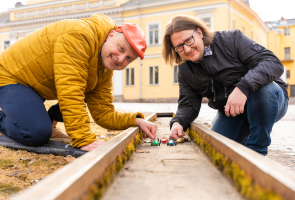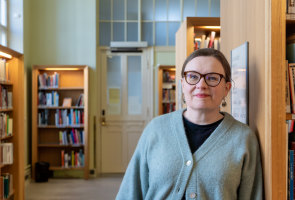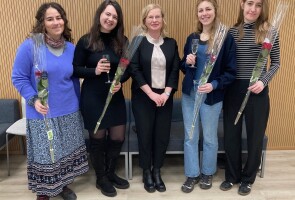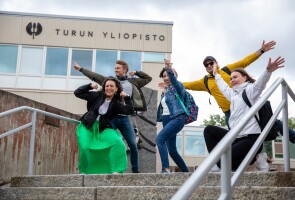Archaeological research often focuses on broad geographical areas, time periods, or big data. In wide generalisations, nuances and details are lost. Ulla Moilanen studied Medieval (c. 900 – 1400 AD) inhumation graves in Finland and found out that the period was more diverse than previously thought.
In her doctoral dissertation, Ulla Moilanen reanalysed hundreds of old excavation reports and conducted excavations by herself. The research showed that there was significant variation in Medieval burial customs. Moilanen explains the variation by individual choices at different stages of the burial ritual. These choices may have been influenced by different social motives, beliefs, and local events.
– Instead of considering burials simply as direct reflections of religious ideology, gender, or social status, they can be understood as complex social dialogue. The burials may tell us about loving care but also about fear and other negative feelings, Moilanen says.
In addition to general variation, Moilanen noticed that double and multiple burials increased around AD 1100 in Southern Finland. Graves in which spearheads and arrowheads have been struck into the coffin structures appear at the same time. These burials have been considered dramatic and deviant in previous studies, but according to Moilanen, the spearheads have been used in the graves in varied ways.
– They usually close the coffin lids, and the people responsible for the burials were careful when striking them into the coffins. They did not want the sharp objects to touch the corpses. Therefore, the previous interpretations of nailing the corpses in the ground are not plausible. It is also possible that previous studies have exaggerated the atypical features of these burials, she says.
– A grave at Valkeakoski Toppolanmäki was considered a mass grave of four individuals tied together. Based on the new analysis, we know that there were only three individuals in the grave and they had not been tied together. There is no evidence of violence in their bones, Moilanen adds.
Famine, Epidemics and Political Instability Possible Reasons Behind Mass Graves
Based on environmental studies and recent molecular studies in the Baltic countries and Scandinavia, it is possible that crop failure and epidemic outbreaks caused a mortality crisis at the time, leading to an increase in double and multiple burials. However, the political instability of the period could also have provoked local power struggles, which could have emphasized the ritual meaning of ancestors. This could explain the various usage of “antique” objects and older cremated bones in the inhumation burials.
– For example, at Hattula Pahnainmäki we have a grave in which hundreds of years older, broken objects were arranged and balanced on the corpse as if they were part of the dress, Moilanen says.
According to Moilanen, detailed studies on individuals and the burial variation opens up new questions and possibilities to interpret the past. The stories of past individuals could be presented in, for example, museum exhibitions.
– The questions surrounding atypical burials and individuals may also bring invisible and overlooked subjects into the discussion, Moilanen says. They enable discussions on diversity, the attitudes towards disabled individuals, varied gender roles, different cultures and beliefs, or even periods of epidemics.
Moilanen’s research shows that detailed, source critical analyses of old excavation reports and documentation materials may increase our knowledge of the past individuals; what were they like and what kind of world they lived in.
***
Ulla Moilanen defends her doctoral dissertation in Archaeology titled ”Variations in Inhumation Burial Customs in Southern Finland (AD 900-1400) - Case Studies from Häme and Upper Satakunta”. The event can be followed remotely.
Opponent: Professor Sarah Tarlow, University of Leicester, UK
Custos: Professor Visa Immonen, University of Turku
Contact details: ummoil@utu.fi
Figures for media:
- The grave at Ylöjärvi Mikkola with two spearheads struck through the coffin lid. Photo: Finnish Heritage Agency (CC BY 4.0).
- A triple grave at Valkeakoski Toppolanmäki from around AD 1200. The grave was previously thought to belong to four individuals tied together. Drawing: Veronika Paschenko.




